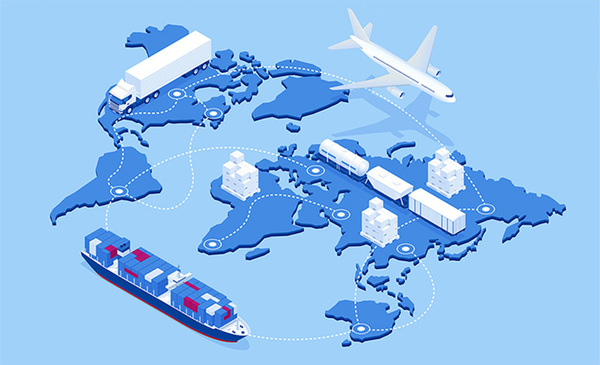The international movement toward open markets prompted by the World Trade Organization is under stress. The W.T.O.’s premise was that trade liberalization would benefit all because individual countries could exploit their position of comparative advantage. However, major trading nations are reevaluating how they want to engage global markets and on what terms. As a result, the foundational principles of contemporary capitalism are suddenly in question.
Why is this happening, and what do these changes signal for the future of globalization in the 21st century? This change has multiple drivers, but the COVID-19 outbreak was the initial trigger, and the accompanying economic crisis revealed the fragility of globalization. Companies and governments alike realized that efficiency could not be the sole criterion for designing supply chains at the expense of resilience.

At the start of his administration, President Biden prioritized strengthening critical supply chains and revitalizing the U.S. industrial base. Transitioning from managing a public health crisis to U.S. competitiveness, innovation, and national security raised concerns about dependence on foreign suppliers. The U.S.’s heavy reliance on outsourcing chip-making became the poster child problem. Chips are essential to modern life, from military gear to cars to kitchen appliances, and a crushing shortage choked the global supply chain.
The Creating Helpful Incentives to Produce Semiconductors and Science Act of 2022 (CHIPS Act), signed into law on August 9, 2022, aimed to catalyze investments in domestic semiconductor manufacturing capacity. It also sought to jump-start R&D and commercialization of leading-edge technologies, such as quantum computing, A.I., clean energy, and nanotechnology. It also sought to create new regional high-tech hubs and a more extensive and inclusive science, technology, engineering, and math (STEM) workforce.
Congress’s success in passing the CHIPS Act showed that legislators were united on the fact that China is on the rise and in open competition with the U.S. for global economic dominance. Congress communicated that the U.S. is retooling for this competition, decoupling from foreign dependence and bringing its manufacturing capability back home.
Policymakers reversed decades of belief that government should not actively intervene in markets. They signaled, instead, that the government should be a significant actor and investor in shaping the national economy and reintroduced industrial policy as a primary tool.
One thing seems clear: The structure of the world’s supply chains has fundamentally changed. They are being transformed everywhere. It is a new kind of globalization.
During the free-market globalization frenzy of the past 30 years, the U.S. had yet to develop a national strategy for guiding private-sector investment abroad. Industry went where it could find the cheapest labor and most promising markets. Profit maximization was the guiding logic.
Multiple U.S. administrations enabled this process through domestic deregulation and tough negotiating positions on rulemaking at the W.T.O. Things have changed and could improve even more.
The U.S.’s onshoring and nearshoring of global supply chains represent an enormous opportunity to rebuild a more robust manufacturing sector. However, to capture the potential of this opportunity, leaders must prepare. States must examine measures to make themselves attractive locations for this new investment.
And because many workers will be unable to do the same jobs, states must invest in education at all levels to trained their labor force for an era of greater automation in manufacturing. They must increase their engagement in higher education to prepare for and manage the known and unknown challenges that this new era of globalization will bring.
We are now entering what some commentators call Globalization 2.0 — or pursuing prosperity in a post-global economy. However, this is not the end of globalization as we know it. Rather, it is a reconfiguration with more emphasis on the importance of proximity.
U.S. companies will likely relocate much production from China and Asia and to Mexico and elsewhere in Latin America. Anticipating this, the Biden administration is ramping up relations with Latin American nations. President Biden met with Brazil’s new leader, Luiz Inácio Lula da Silva, in mid-February; others are likely to follow. The U.S. and Latin American economies are expected to grow much closer as vicinity becomes a real asset in this new era.
Designing for supply chain resilience is now a top priority for global corporations seeking to mitigate risks. It requires designing and implementing flexible, adaptable, and robust strategies, which means building stronger relationships with suppliers and regularly communicating with them to ensure they are prepared for potential disruptions.
As the only international organization dealing with global trade rules, the W.T.O. can still play an essential role in strengthening international supply chains and promoting economic recovery. However, to prevent sliding back into a world of highly competitive, nationally driven trading blocs (not to mention ongoing human rights violations) calls for new approaches. Important measures are required to sustain the multilateral trading system, and urgent action is needed to avoid a scenario where the system fragments.
The W.T.O.’s belief that globalization and interdependence would produce a more just and peaceful world has lost critical adherents. We must wait to see how Globalization 2.0 unfolds and adapts to international conflict, economic competition, technological innovation, and climate change.
Ray Offenheiser is the Inaugural Director of the Pulte Institute.